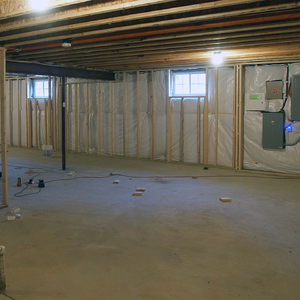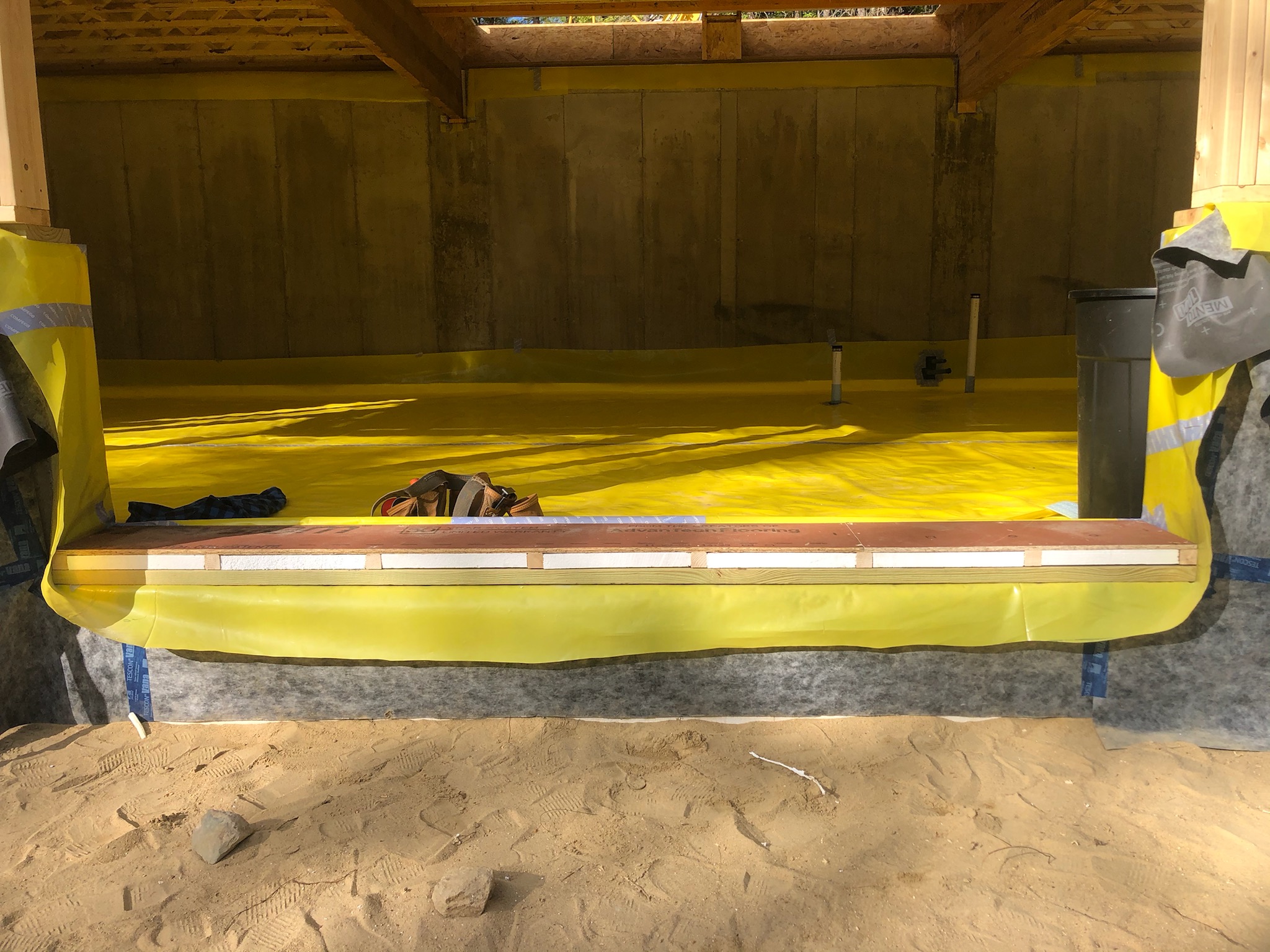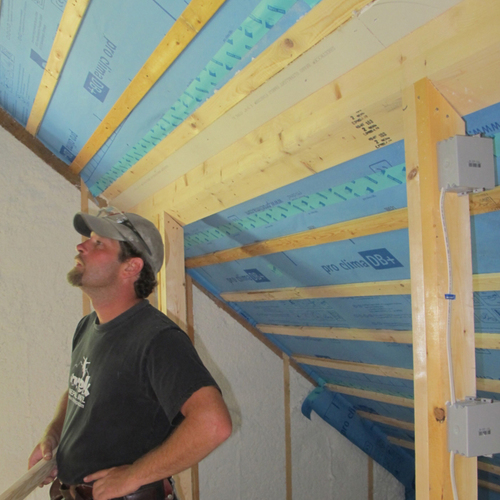
Few topics in building science have been as thoroughly haggled over as vapor retarders, the materials designed to keep water vapor from migrating into wall and roof assemblies. In a paper published nearly 20 years ago, Joseph Lstiburek, a principal at Building Science Corp., summed up the problem this way: Building professionals may have come to understand the challenges of water in liquid and frozen form, but water vapor is “in a class of craziness all by itself.”
The problem is that water vapor doesn’t always stay in vapor form. When it comes into contact with a surface that is below the dew point, vapor becomes a liquid. This can cause a host of problems inside wall and roof cavities. Vapor retarders are intended to stop water vapor from moving into a wall or roof assembly in the first place so this can’t happen.
“The fundamental principle of control of water in the vapor form is to keep it out and to let it out if it gets in,” Lstiburek wrote. “Simple, right? No chance. It gets complicated because sometimes the best strategies to keep water vapor out also trap water vapor in.”
That was the problem with polyethylene sheeting, once a widely used vapor retarder in cold climates. In technical terms, poly is a Class I vapor retarder with a perm rating of no more than 0.1, on a par with sheet metal and glass (a “perm” is a measure of how much water vapor can pass through a material). Poly was typically applied on the warm side of a framed wall. In a heating climate, and when detailed carefully, the poly prevented warm, moist air from traveling into wall cavities in the winter where it could condense on the back side of cold sheathing. But if water…
Weekly Newsletter
Get building science and energy efficiency advice, plus special offers, in your inbox.

This article is only available to GBA Prime Members
Sign up for a free trial and get instant access to this article as well as GBA’s complete library of premium articles and construction details.
Start Free TrialAlready a member? Log in















13 Comments
Thanks Scott!
I'm moving to use more Larsen truss exterior insulation. Am I finally tiered of all that EPS stuck to me with my 6-8" layers? With a 2x4 or 2x6 load bearing wall (with fiber insulation) and air sealed sheathing, do we need to worry at all even with T&G interior. At that point, it will always dry to the interior and the sheathing will always be safe with all that cellulose on the exterior. Any thoughts mentors?
Ah Jeez, on a sq ft basis a lot of these products really do cost as much as sheets of drywall for the materials! However, the labor to put these smart membranes up vs drywall is just a fraction.
This is a great overview.
One thing Kohta said confused me a bit:
“If you need a vapor retarder, you may want to step back and [consider if the wall was designed properly],” Ueno said. “If you’ve designed yourself into a corner where you need a vapor retarder, I always recommend one of these variable perm products.”
I get that in the context of having used inadequately thick exterior foam, but what about the most common walls we build with all fibrous insulation? Was Kohta saying they were a bad design choice, or that they didn't need a vapour-retarder?
Hi Malcolm! Great question--I guess I should have put a few caveats on that of (a) I'm a bit Zone 5-chauvinist, given that's where a lot of my work is, and (b) I'm referring specifically to Class I and II vapor retarders, not Class III/latex paint.
So that being said--if you're in CZ 5, and you have a vented cladding with plywood or OSB (or other materials), you are allowed to use a Class III vapor retarder. Which covers a lot of construction in a lot of climate zones. Of course, the requirements get more stringent as you get colder, into CZ 6 etc., and Class III is a less viable of an option. The table below is pulled from the link here.
GM-0903: IRC FAQ: Insulating Sheathing Vapor Retarder Requirements
https://www.buildingscience.com/documents/guides-and-manuals/irc-faqs/irc-faq-insulating-sheathing-vapor-retarder-requirements
For reference, we've looked specifically at the problem of 'how necessary is vapor control in walls in CZ 6'--research at U Waterloo; key stuff is on slides 20 through 30. Summary: running a 2x6 wall in CZ 6 with 50% RH flatline all winter long (i.e., scary high interior RHs), using Class III/latex paint doesn't work. But same conditions, adding Class II vapor retarder paint worked great in the following winter.
NESEA: Moisture Safe? The Writing is on the Wall.pdf
https://www.buildingscience.com/sites/default/files/2017-03-08_nesea_be17_ueno_for_pdf.pdf
Thanks Kohta, that makes a lot of sense.
Will smart membranes eventually become "dumb" ?
This is still a fairly recent technology. What will these membranes look like in 50 or 100 years, when the building will still be standing ? Isn't it a bit risky to assume they will work over such a long time? Kraft paper in my 1970's house is turning to dust when handled.
Moisture management in cold climate is fairly critical. How confident can we be that they will last a long time and work as intended?
Thierry,
Maybe that's where Eric Whetzel's approach makes sense: Use them as a belt an suspenders approach, as opposed to something that the wall fundamentally relies on for its performance.
And maybe that's what Kohta was saying too?
The ProClima INTELLO Plus as we at 475.supply and distribute in North America since 2010, was introduced in Germany in 2006. It performance has been verified with real life confirmation of it's vapor permeance (so 15+ years now) as well as rapid age tested to similate longer usage periods. The INTELLO 100x vapor variable permeance (form 0,13 dry to over 13 in humid conditions to facilitate inward drying actually slightly improves with time. We also have several projects that are monitored with moisture sensors and continue perform as designed.
That's good to hear. Which parameter(s) is it that the improves with time?
I have used Membrain on quite a few projects and have been happy with the product. This product fits the bill when you are on a budget build but still trying to use modern building techniques and products. I ordered online right from Home Depot.
There was a common theme in the article that MemBrain was difficult to work with or tears easily. Did you experience that?
yes, very flimsy- intello much better-worth the cost-differential for sure
Would you still use a product like this internally if you're applying a product like Blueshield to the external? Zone 5, no more than 1 inch of exterior insulation.
Log in or become a member to post a comment.
Sign up Log in